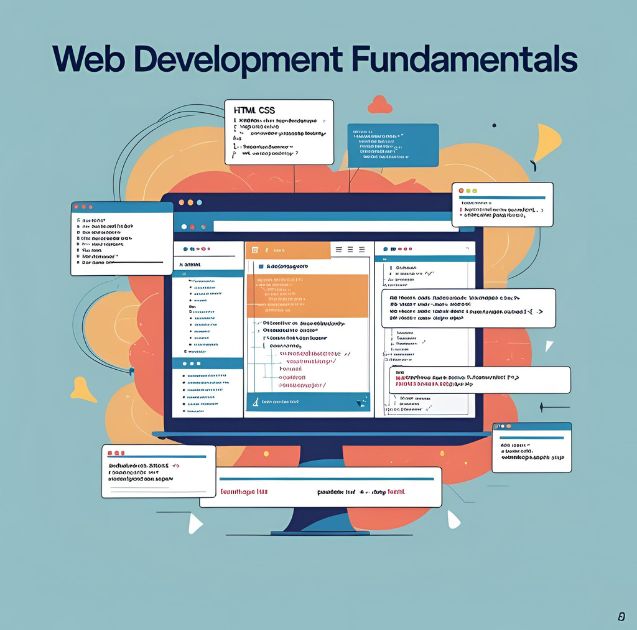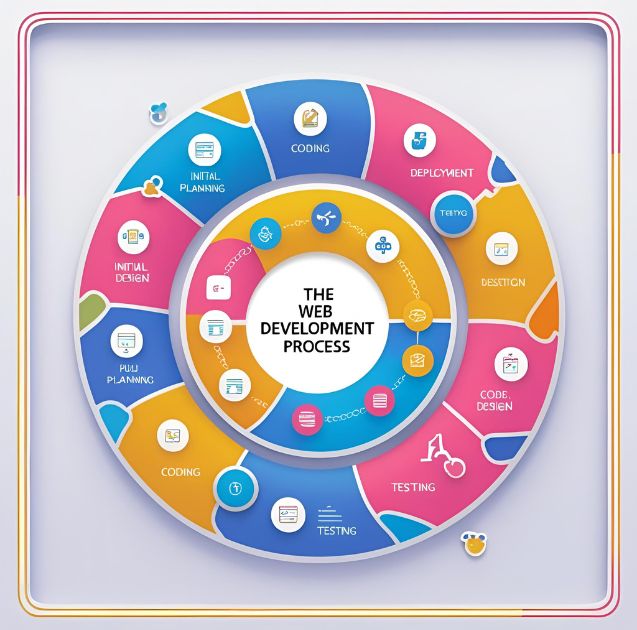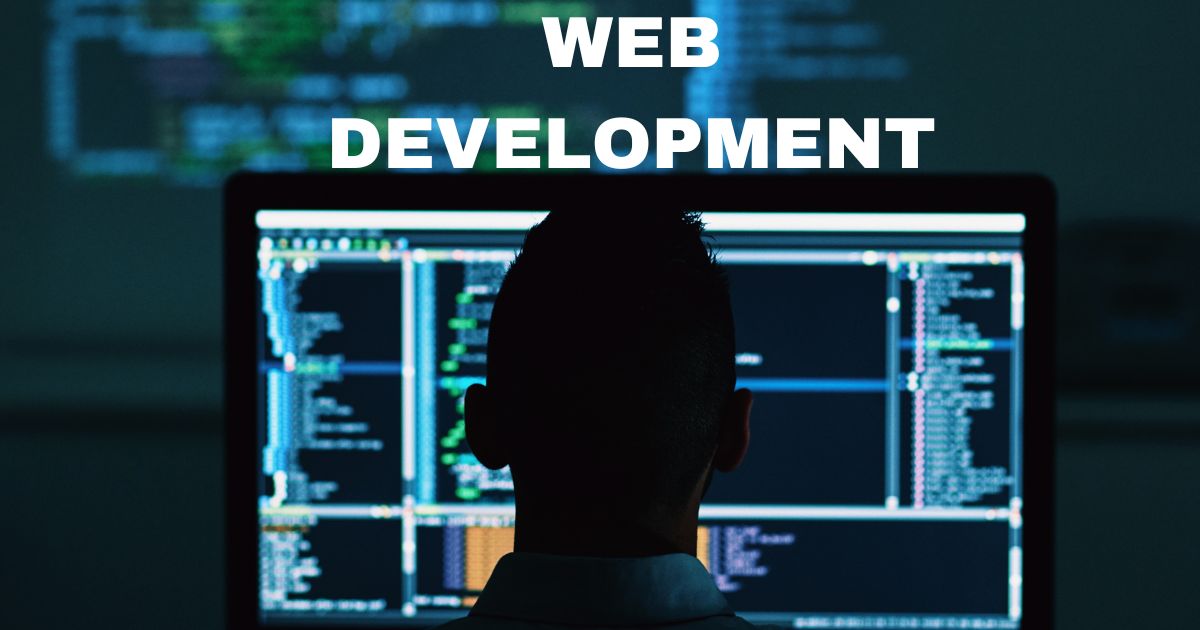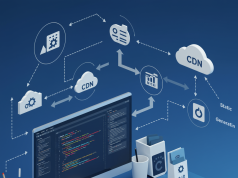Web development powers every website you visit, from simple blogs to complex e-commerce platforms. But what exactly does it involve, and how do developers bring digital ideas to life?
This comprehensive guide breaks down everything you need to know about web development. You’ll discover the core concepts, learn about different types of web development, explore essential technologies, and understand the career opportunities available in this dynamic field.
Understanding Web Development Fundamentals

Web development is the process of creating and maintaining websites and web applications. It encompasses everything from building simple static pages to developing complex, interactive platforms that millions of people use daily.
At its core, web development involves writing code that tells browsers how to display content, handle user interactions, and communicate with servers. This process requires a combination of programming languages, frameworks, and tools that work together to create functional digital experiences.
The field spans multiple disciplines, including visual design, user experience planning, and technical implementation. However, the primary focus remains on the coding and technical aspects that make websites work properly.
Types of Web Development
Web development is divided into three main categories, each with distinct responsibilities and skill requirements.
Frontend Development
Frontend development focuses on everything users see and interact with directly. Frontend developers, also called client-side developers, create the visual and interactive elements of websites using HTML, CSS, and JavaScript.
Their responsibilities include:
- Designing responsive layouts that work on all devices
- Implementing interactive features like buttons, forms, and animations
- Optimizing websites for speed and accessibility
- Ensuring a consistent appearance across different browsers
Frontend developers must balance aesthetic appeal with functionality, creating interfaces that are both beautiful and user-friendly.
Backend Development
Backend development handles the server-side logic that powers websites behind the scenes. Backend developers, or server-side developers, work with databases, servers, and applications that users never see directly.
Key backend responsibilities include:
- Managing databases and data storage
- Creating APIs that connect different software systems
- Implementing security measures and user authentication
- Optimizing server performance and handling traffic loads
Backend developers ensure that websites can process requests, store information securely, and deliver content efficiently to users.
Full-Stack Development
Full-stack developers possess skills in both frontend and backend development. They can work on complete web projects from start to finish, handling everything from user interface design to database management.
This versatility makes full-stack developers valuable team members, especially in smaller companies or startups where wearing multiple hats is essential.
Essential Web Development Technologies
Several core technologies form the foundation of modern web development.
HTML (HyperText Markup Language)
HTML provides the structural foundation for web pages. It uses tags to define different elements like headings, paragraphs, images, and links. Think of HTML as the skeleton that gives shape to web content.
CSS (Cascading Style Sheets)
CSS controls the visual presentation of HTML elements. It handles colors, fonts, layouts, spacing, and responsive design. CSS transforms basic HTML structures into visually appealing websites.
JavaScript
JavaScript adds interactivity and dynamic behavior to websites. It enables features like form validation, interactive maps, animated graphics, and real-time updates without requiring page reloads.
Popular Frameworks and Libraries
Modern web development often relies on frameworks and libraries that streamline the development process:
Frontend frameworks:
- React: A JavaScript library for building user interfaces
- Vue.js: A progressive framework for creating interactive web applications
- Angular: A comprehensive platform for building large-scale applications
Backend frameworks:
- Node.js: Allows JavaScript to run on servers
- Django: A Python framework for rapid development
- Ruby on Rails: A Ruby framework emphasizing convention over configuration
The Web Development Process

Creating a website involves several structured phases that ensure successful project completion.
Planning and Research
Every web development project begins with thorough planning. This phase involves understanding project requirements, researching target audiences, and defining technical specifications.
Developers must consider factors like:
- Project scope and timeline
- Target audience needs and preferences
- Technical requirements and constraints
- Budget and resource limitations
Design and Wireframing
Before writing code, developers create visual mockups and wireframes that outline the website’s structure and appearance. This step helps identify potential issues early and ensures all stakeholders share the same vision.
Development and Coding
The actual coding phase involves implementing the planned design using appropriate technologies. Developers typically work iteratively, building features incrementally and testing functionality throughout the process.
Testing and Debugging
Thorough testing ensures websites work correctly across different browsers, devices, and scenarios. Developers test for functionality, performance, security, and usability issues.
Deployment and Maintenance
Once testing is complete, websites are deployed to live servers where users can access them. Ongoing maintenance includes security updates, performance optimization, and feature enhancements.
Career Opportunities in Web Development
Web development offers diverse career paths with strong job market demand and competitive salaries.
Entry-Level Positions
New developers can start with positions like:
- Junior Web Developer
- Frontend Developer
- WordPress Developer
- Web Designer with development skills
Advanced Roles
Experienced developers can pursue roles such as:
- Senior Full-Stack Developer
- Technical Lead
- Solutions Architect
- DevOps Engineer
Freelancing and Entrepreneurship
Many web developers choose to freelance or start their own agencies. This path offers flexibility and the potential for higher earnings, though it requires additional business skills.
Skills Needed for Web Development Success
Successful web developers combine technical expertise with soft skills that enable effective collaboration and problem-solving.
Technical Skills
Essential technical competencies include:
- Proficiency in core web technologies (HTML, CSS, JavaScript)
- Understanding of at least one backend programming language
- Familiarity with databases and data management
- Knowledge of version control systems like Git
- Experience with responsive design principles
Soft Skills
Equally important soft skills include:
- Problem-solving abilities
- Attention to detail
- Communication skills for client and team interactions
- Continuous learning mindset
- Project management capabilities
Getting Started in Web Development
Beginning your web development journey requires a structured approach and consistent practice.
Choose Your Learning Path
Decide whether to focus on frontend, backend, or full-stack development initially. Most beginners start with front-end development since it provides immediate visual feedback.
Select Learning Resources
Many excellent resources are available for learning web development:
- Online courses and tutorials
- Coding boot camps
- University computer science programs
- Self-directed learning through documentation and practice projects
Build a Portfolio
Create personal projects that demonstrate your skills to potential employers or clients. Start with simple projects and gradually increase complexity as your abilities grow.
Join Developer Communities
Connect with other developers through online forums, local meetups, and professional networks. These communities provide valuable support, learning opportunities, and career connections.
The Future of Web Development
Web development continues evolving rapidly with new technologies and methodologies emerging regularly.
Current trends shaping the field include:
- Progressive Web Apps (PWAs) that combine web and mobile app features
- Artificial intelligence integration for personalized user experiences
- Voice interfaces and conversational user interfaces
- Serverless architecture and cloud-based development
- Increased focus on web accessibility and inclusive design
Ready to Start Your Web Development Journey?
Web development offers an exciting career path with endless opportunities for creativity and growth. Whether you’re interested in creating beautiful user interfaces, building robust backend systems, or solving complex technical challenges, web development provides the tools and platforms to bring your ideas to life.
The field rewards continuous learning and adaptation, making it perfect for those who enjoy staying current with technology trends. With strong job market demand and the flexibility to work remotely or freelance, web development can provide both financial stability and creative fulfillment.
Start by learning the fundamentals of HTML, CSS, and JavaScript. Practice regularly, build projects that interest you, and don’t be afraid to make mistakes—they’re an essential part of the learning process. With dedication and persistence, you can master the skills needed to succeed in this dynamic and rewarding field.







